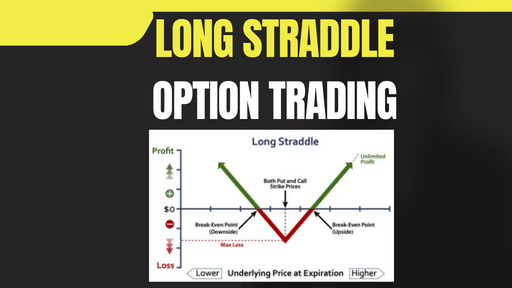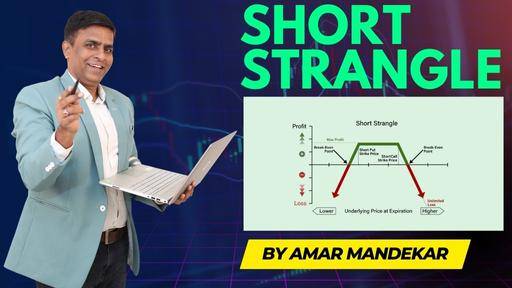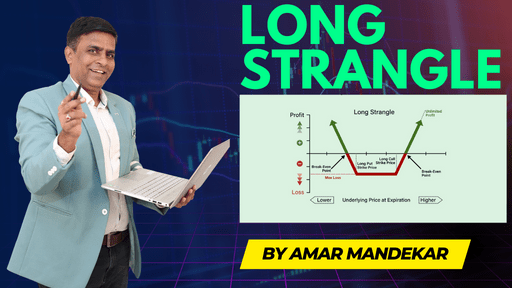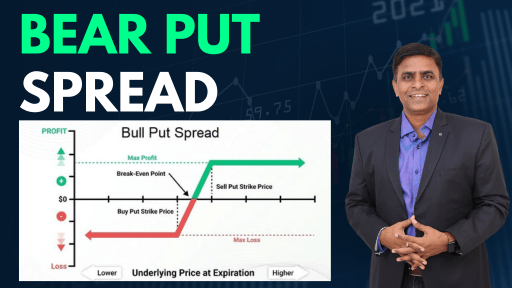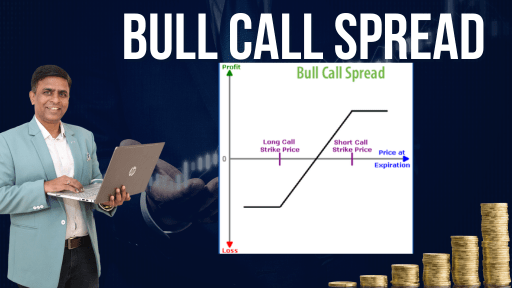Table of Contents
What is a Long Straddle?
In the ever-changing landscape of the stock market, traders seek strategies that can thrive in both bullish and bearish scenarios. The Long Straddle is one such tactic, empowering traders to capitalize on substantial price swings without committing to a specific market direction. This ingenious strategy involves the simultaneous purchase of both a call option and a put option with identical strike prices and expiration dates on the same underlying asset.

Keypointers of Long Straddle
- Long Straddle Definition: The Long Straddle is an options strategy where a trader buys both a long call and a long put on the same underlying asset, with the same expiration date and strike price.
- Profit Goal: Traders use the Long Straddle to profit from a significant price movement in the underlying asset, either higher or lower, usually triggered by a newsworthy event or information release.
- Unlimited Profit Potential: The strategy offers unlimited profit potential if the underlying asset’s price moves significantly, regardless of the direction.
- Limited Risk: The maximum risk is the total net premium paid plus any trade commissions. This loss occurs if the underlying asset’s price equals the strike price of the options at expiration.
- Implied Volatility Capture: An alternative use of the Long Straddle involves capturing the anticipated rise in implied volatility by initiating the strategy before the event and closing it just prior to the occurrence.
- Uncertain Market Reaction: One challenge with the Long Straddle is that the market may not react strongly enough to the event or news, leading to potential losses.
- At-the-Money Strike Price: The strike price is set at-the-money or close to it, allowing the trader to benefit from strong moves in either direction.
- Common Event Triggers: Traders often employ the Long Straddle ahead of news reports like earnings releases, Fed actions, legislative decisions, or election results.
- Risk of Time Decay: The strategy faces the risk of options losing value due to time decay, making option selection and timing crucial.
- Profit Example: For instance, if a stock is priced at $50, and a trader buys both a $50 call option at $3 and a $50 put option at $3, they can profit if the stock rises above $56 or falls below $44 at expiration.
How It’s Used in Trading
When employing the Long Straddle, traders anticipate significant price movements but remain uncertain about the direction. This strategy comes into play when they expect a stock’s price to experience substantial fluctuations due to an impending event, such as election result, budget day, company result, earnings announcements, product launches, regulatory decisions, or other market-moving factors.
Here’s the beauty of it all – as the market starts to swing, the Long Straddle allows traders to reap profits, irrespective of whether the stock price surges in any direction
- Call Option: The call option provides traders with the right to buy the underlying asset at the predetermined strike price on or before the expiration date. This is a bullish component of the Long Straddle.
- Put Option: On the flip side, the put option grants traders the right to sell the underlying asset at the specified strike price on or before the expiration date. This represents the bearish aspect of the strategy.
It’s like having two hounds on leashes—one bullish, one bearish—ready to set loose as soon as the market beckons.
Straddling in Action: A Real-Life Example
Let’s step into the shoes of a trader, Jane, who wants to capitalize on the upcoming earnings report of Company XYZ, a tech giant. The stock has been historically known to experience significant price swings after earnings announcements, and Jane expects nothing different this time.
On August 15, 2023, with Company XYZ’s stock trading at $100, Jane implements the Long Straddle strategy:
- Step 1: Identify Attractive Options: Jane selects both the call option and the put option for Company XYZ with a strike price of $100 and an expiration date of September 30, 2023.
- Step 2: Calculate Investment: Each option contract costs $3, resulting in a total initial investment of $6 ($3 for the call option + $3 for the put option).
- Step 3: The Earnings Announcement: On September 1, 2023, Company XYZ releases its earnings report, exceeding market expectations. The stock price immediately reacts, soaring to $120.
- Step 4: Profiting from the Call Option: As the stock price skyrocketed, Jane exercises her call option, buying Company XYZ shares at the strike price of $100. She can now sell these shares at the market price of $120, pocketing a $20 profit per share.
- Step 5: Profiting from the Put Option: Given the unexpected surge in the stock price, the put option remains unexercised, causing Jane only to lose the initial $3 premium she paid for it.
The result? A net profit of $17 per share ($20 from the call option – $3 for the put option). Jane has managed to profit from Company XYZ’s earnings announcement, regardless of the stock’s direction, thanks to her strategically implemented Long Straddle.
FAQs About the Long Straddle
1. Is the Long Straddle suitable for all market conditions? Absolutely not! While the Long Straddle can thrive in volatile markets, it might lead to losses in relatively calm or stagnant conditions. Remember, this strategy relies on substantial price swings for profit generation.
2. Can I use the Long Straddle for long-term investments? The Long Straddle is not an ideal strategy for long-term investors. Its success lies in capitalizing on short-term price fluctuations, often centered around specific events or catalysts.
3. What factors should I consider before implementing a Long Straddle? Traders must carefully evaluate the implied volatility of the underlying asset and the timing of potential price-moving events. High implied volatility increases option premiums, making the strategy costlier.
4. Are there any risks associated with the Long Straddle? Yes, like any trading strategy, the Long Straddle carries risks. If the stock price fails to move significantly in either direction, both the call and put options may expire worthless, resulting in a total loss of the premium paid.
5. Can I adjust my Long Straddle position after implementation? Certainly! Traders can modify their Long Straddle by adjusting the strike prices or expiration dates of the options if they expect further market movements but want to limit potential losses.
The Grand Finale: Wrapping It Up
In conclusion, the Long Straddle is a captivating option trading strategy that caters to the hearts of adventurous traders who revel in market uncertainty. It’s like sailing through a tempest, harnessing the force of unpredictable winds to steer your trading journey. By simultaneously buying both call and put options, traders can benefit from significant price swings, irrespective of the market’s direction.
However, it’s crucial to recognize that the Long Straddle thrives in specific market conditions, particularly during events that trigger substantial price fluctuations. Before embracing this strategy, conduct thorough research, evaluate implied volatility, and ensure it aligns with your risk tolerance and trading goals.
So, if you’re ready to ride the rollercoaster of market unpredictability, hop aboard the Long Straddle and unleash its potential to turn uncertainty into profit! Remember, the thrill lies in the waves of the unknown, and the Long Straddle offers you the ticket to experience it all firsthand.
Disclaimer:
The information provided in this blog post is for educational and informational purposes only. It should not be construed as financial advice or a recommendation to buy or sell any securities. Always do your own research and consult with a qualified financial advisor before making investment decisions.
Also Read : Bull Call Spread: How the Options Trading Strategy Works
External Sources : Long Straddle







